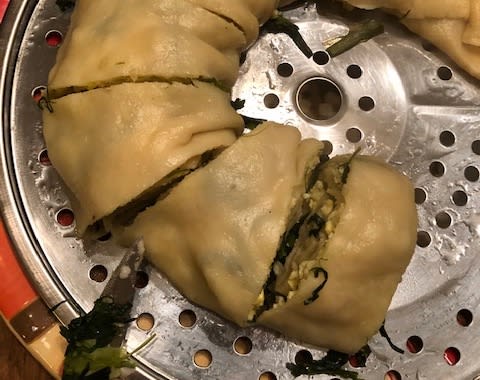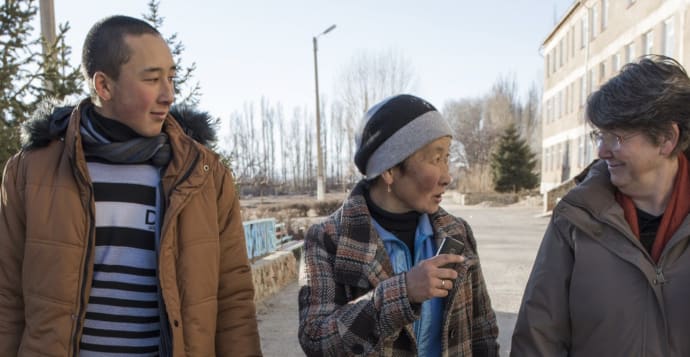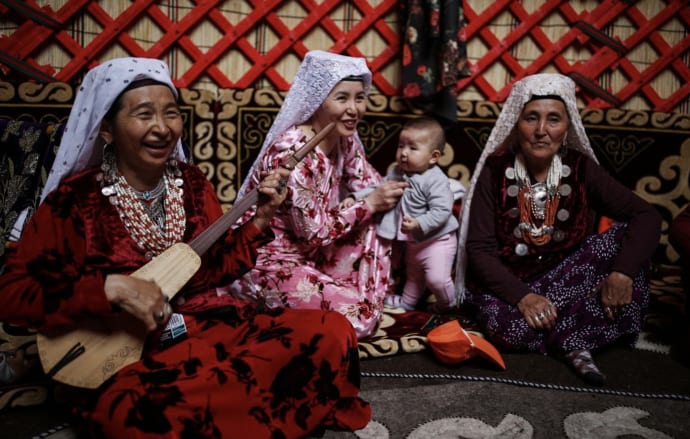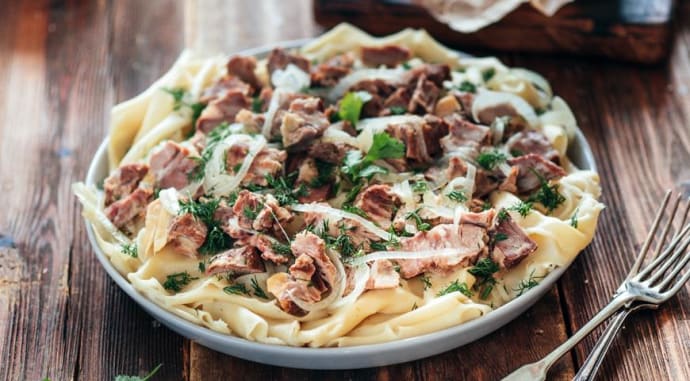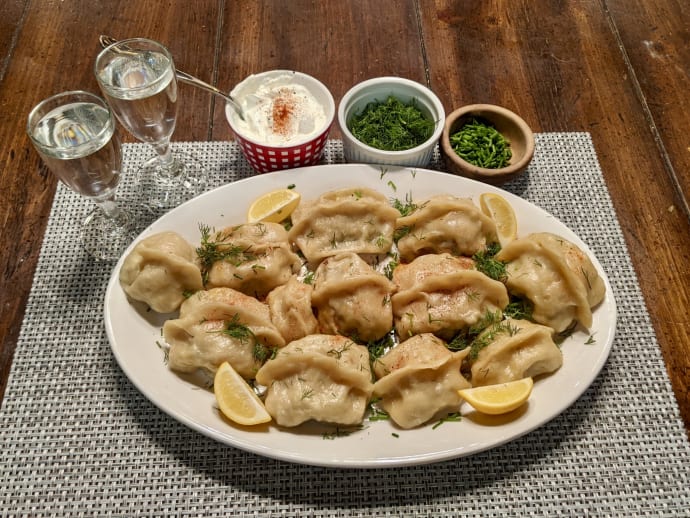
How to cook basic Pumpkin Spice Manti
By John Cervetto and Christie Emberley (K-15)
The air is getting a little chilly, the leaves are changing colors, and it’s the perfect time of year to spend an evening inside making a cozy meal! Making manti is a great family/group activity– there’s a job for everyone! And the end result is so delicious too!
Manti are large steamed buns popular throughout Central Asia. They are most often made with beef, lamb, or potatoes. But in the fall my favorite type of manti starts appearing in the bazaar– pumpkin manti! You can use sugar pumpkins or any type of winter squash. For this recipe we used acorn squash and kabocha
For the dough
- 5 cups flour
- 1 egg
- 1 1/2 cups of water
- 1 tablespoon oil
- 1 teaspoon salt
For the filling
- 3 large onions
- 1½ lbs pumpkin pieces (or other winter squash)
- 2 medium russet potatoes
- 1 lb ground beef and lamb mixed (or double the pumpkin and leave out!)
- 1 tablespoon salt
- 1 teaspoon black pepper
- 2 tablespoons of chopped parsley
- Optional spices: paprika, turmeric, cinnamon, chili powder, garlic and onion powder, dill
- 1/2 cup oil
Instructions
1. Combine all of the dough
Combine all of the dough ingredients together. Knead dough for a few minutes until a smooth ball forms. Let the dough rest for about thirty minutes. Knead again for a few minutes and let rest for thirty more minutes.
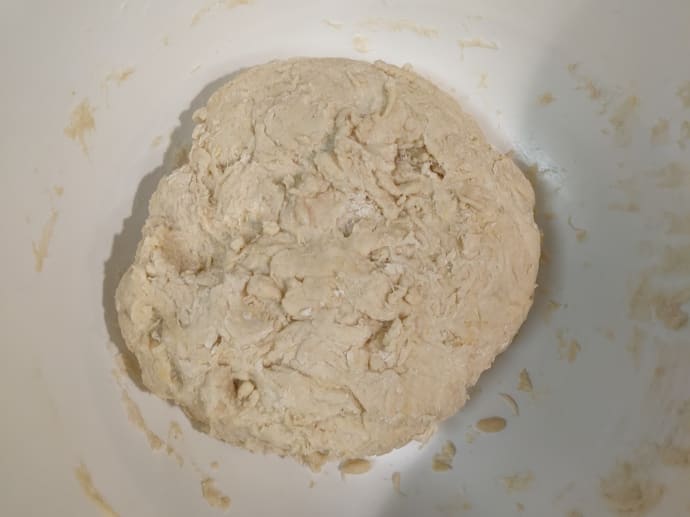
2. Chop the pumpkin, onion, and potato
Use a food processor to chop the pumpkin, onion, and potato into small pebble-size pieces. For best results chop each ingredient separately and combine in a large bowl. You can also chop by hand! (no easy feat for the pumpkin!)
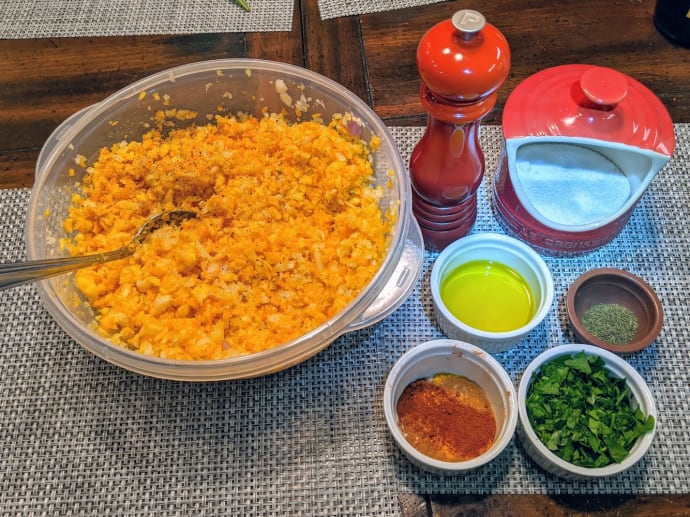
3. Mix in a bowl
Once chopped combine pumpkin, parsley, spices, and oil and mix in a bowl. If you make too much filling, you can freeze it and save for later. You can also add the mixture to a stir fry or soup!
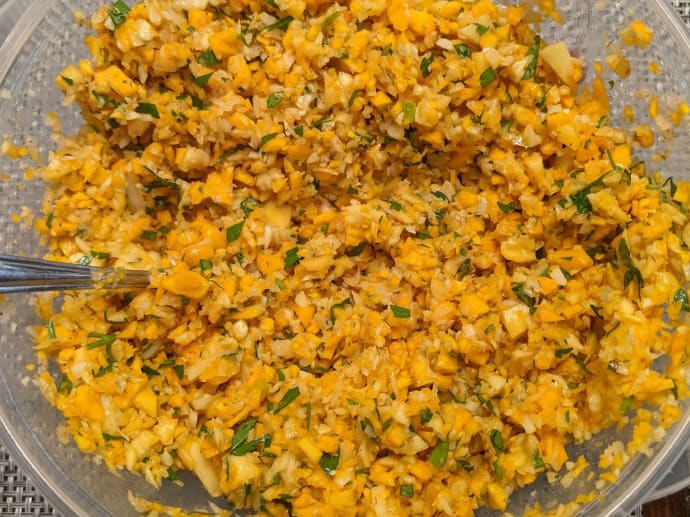
4. Combine beef and lamb (optional)
If you’d like to make some manti with meat, combine beef and lamb in a bowl with salt and pepper. Add some of the pumpkin mixture so you have roughly half and half (or whatever your preferred ratio is!)
As we made vegetarian manti, we don’t have a photo to support this optional step. Instead, here is a Kyrgyz sheep.
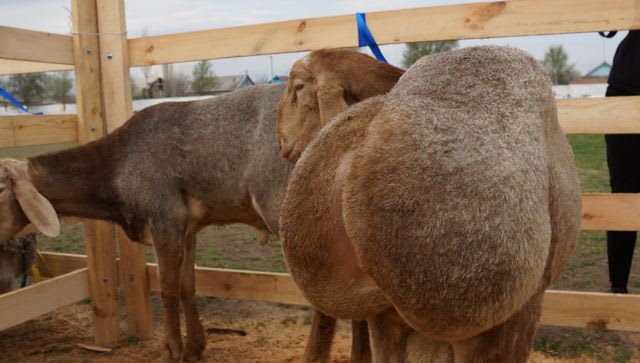
5. Roll dough
Using a rolling pin, roll dough out into a thin sheet (about 1/8th of an inch). If you have a pasta maker you could also use that, though the dough is very soft and we found it easier to roll out by hand. (More fun too!) My rolling skills are not at the level of a Kyrgyz apa, so I divided the dough into four pieces before rolling.
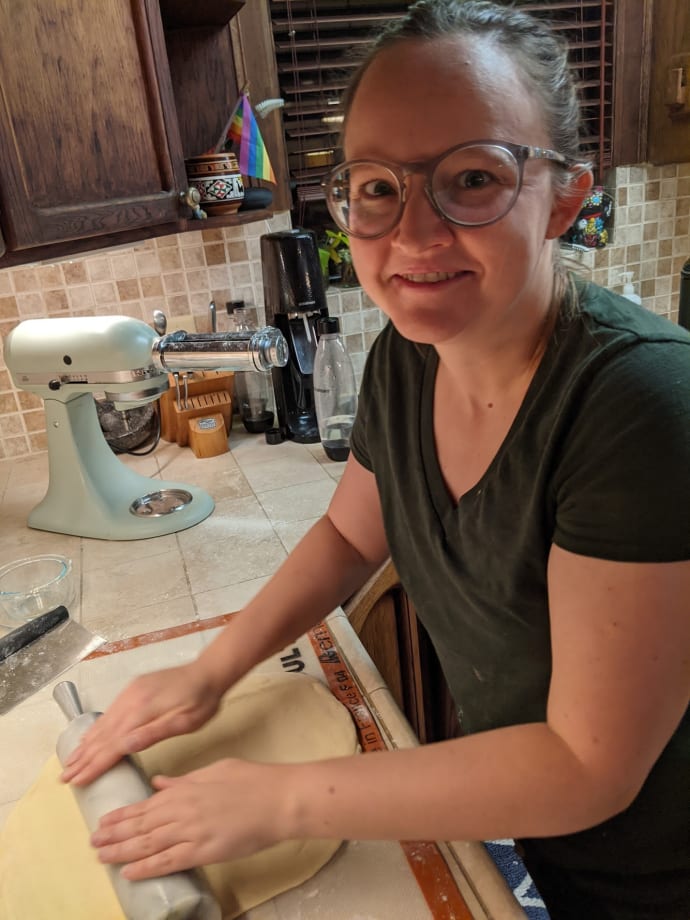
6. Cut dough into circles
Use a large cup or biscuit cutter to cut dough into circles. My Kyrgyz apa used a tea cup, I used a pint glass or small bowl
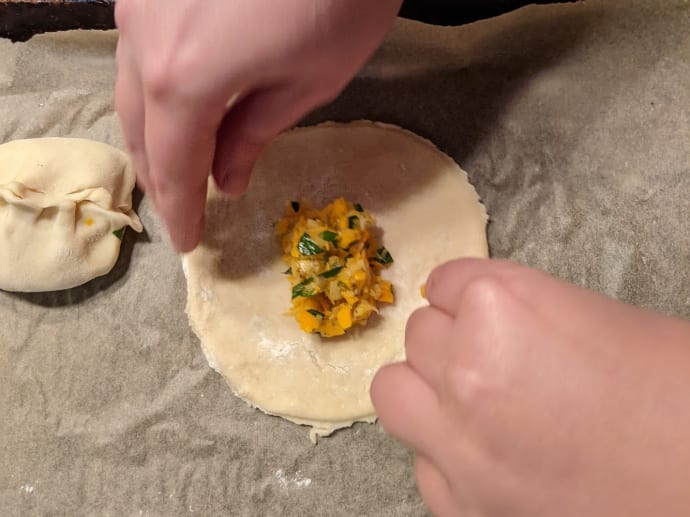
7. Stuff and fold the dough
Put about a tablespoon of filling in the center of dough, being careful to leave a large border. There are many ways to fold manti, the easiest we found was to pinch opposing corners together in the center and create a little pouch. This is the fun part! Experiment with different ways of folding! (at this point we realized we had way too many manti! Depending on the size of your manti making crew, you may come to the same conclusion. Feel free to toss some in the freezer to eat later!)
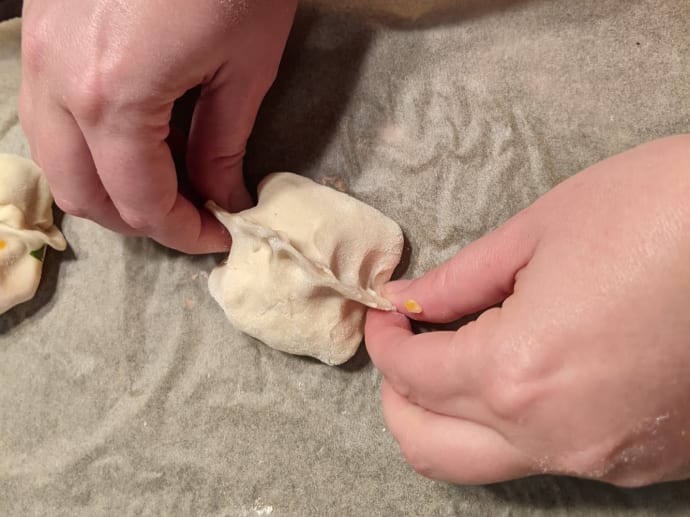
8. Steam to cook
To cook: boil water in your steamer. Oil the steamer tray and place manti, leaving some space between each (they’ll get a little bigger as they steam!) Steam for about 40 minutes.
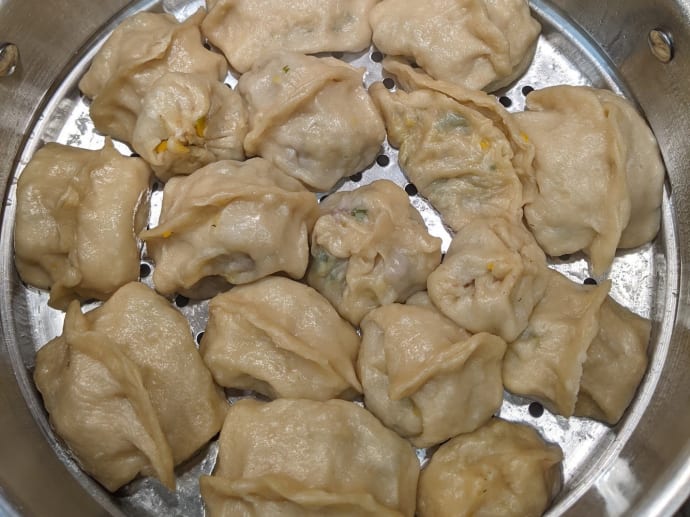
9. Garnish and enjoy!
Serve with dill, sour cream, and chili oil. Add meatballs to it, just for fun!
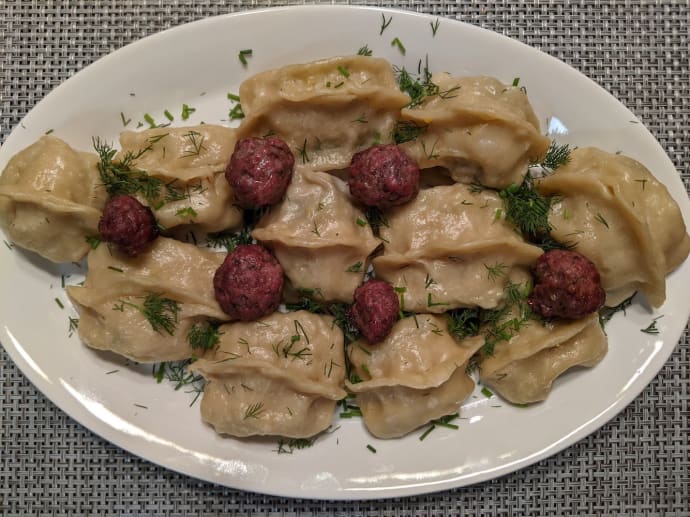
Enjoy the fruits of your hard work! Have you had manti before? What’s your favorite memory of eating or making them in Kyrgyzstan.
(Thanks to these sites for recipe help: Peter’s Food Adventure and Valentina’s Corner)
